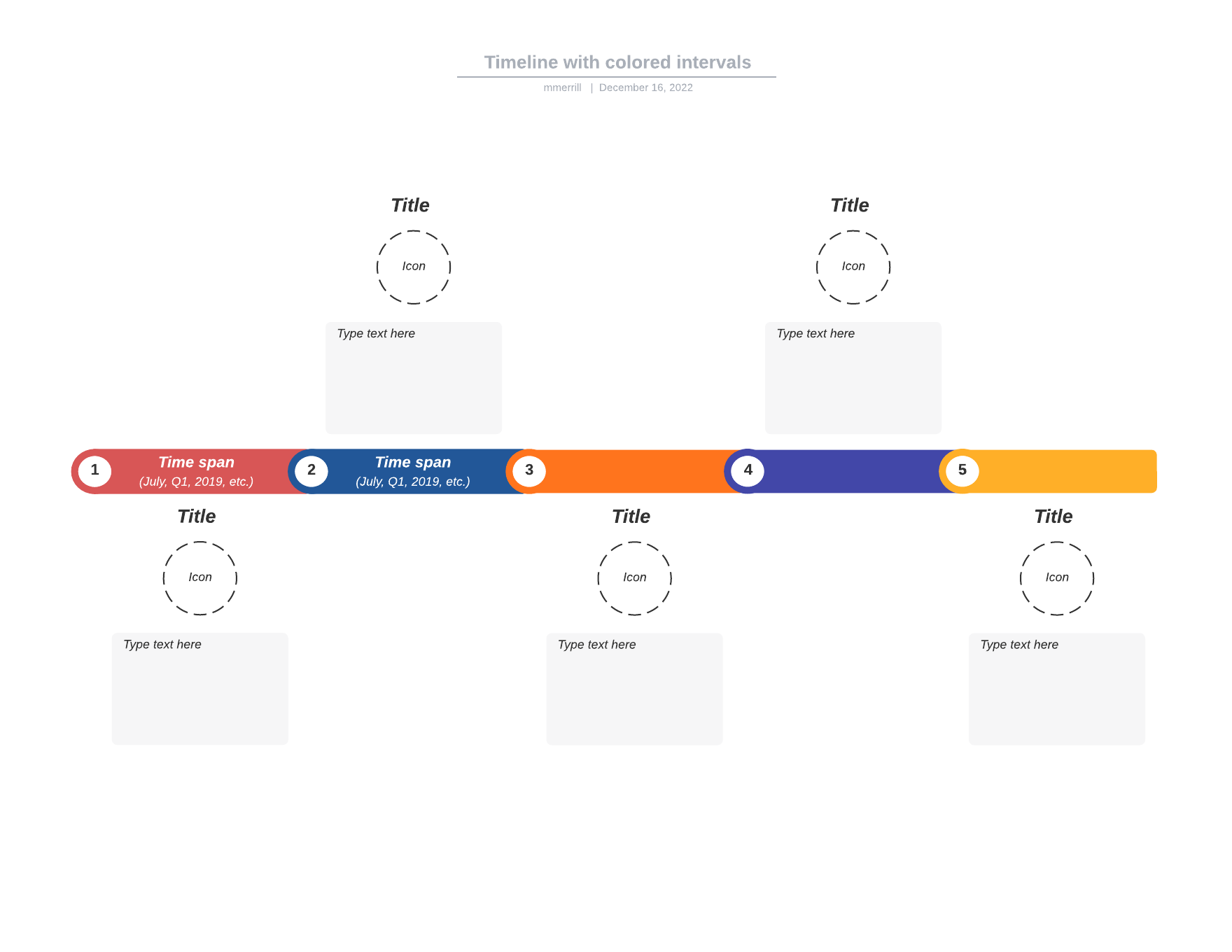
The ultimate goal setting process: 7 steps to creating better goals
Reading time: about 7 min
Topics:
Do you set the same New Year’s resolutions every year? Do you recommit to the same goal, promising yourself that you’ll finally finish it?
If you answered yes, know that you’re not alone. Many people are stuck in the same cycle of setting goals, forgetting about them or failing to complete them, and then setting the same goals again with a renewed (but temporary) resolve to meet those goals.
But you can break the cycle. Continue reading to learn about the goal setting process and get the most out of your business, your team, and yourself.
What is goal setting?
Some people may have trouble sticking to goals because they don’t distinguish their goals from more casual, everyday self-improvement efforts. Just because you decide to start running every day doesn’t necessarily make that a conscious goal. So let’s revisit what goal setting means.
Goal setting is a purposeful and explicit process that starts with identifying a new objective, skill, or project you want to achieve. Then, you make a plan for achieving it, and you work to complete it.
Instead of just running with no particular purpose, a true goal would be more along the lines of starting a training program to complete a specific race, say a Thanksgiving Day half marathon, which requires much more careful planning, motivation, and discipline.
Why is goal setting important?
When you set goals, you take control of your life’s—or your work’s—direction. Goals provide you with focus. The decisions you make and actions you take should bring you closer to achieving those goals.
Setting goals keeps you moving and feeling productive, while significantly benefitting your organization. When you set goals, you create a vision of what your life or your business could look like. Then you start pushing yourself and your team to get the best results possible.
What is goal-setting theory?
Proposed by industrial-organizational psychologist Edwin Locke, goal-setting theory recommends how to set the most effective kinds of goals. Locke found that employees perform better and are more motivated to complete goals if those goals are difficult.
In other words, you can’t cheat. The easier the goal, the less you’ll work to achieve it. If you set hard (but not impossible) goals, you’ll actually put in the highest level of effort.
This article details the other important aspects of Locke’s theory, like setting realistic goals and being self-motivated. Keep reading to get the most out of your personal goals or help your employees effectively set their own.
How to set goals in 7 steps
If goals are so important, why do we fail to achieve them? Because we don’t plan the steps to get there.
A goal setting process forces you to think about the journey (in other words, how you’re going to complete your tasks) instead of just the end destination. Here are some suggestions to keep in mind:
1. Think about the results you want to see
Before making a goal, take a closer look at what you’re trying to achieve and ask yourself the following questions:
- Is this goal something you truly want?
- Does it align with your values or other goals?
- Is it important enough to pour hours of time and effort into it?
If you’re not willing to put in the time, it may not be worth pursuing.
If you create a long list of goals to pursue all at the same time, you may have a difficult time achieving any of them. Instead, use the questions above to determine which goals matter the most to you right now, and then focus on those few.
2. Create SMART goals
Once you’ve zeroed in on what you actually want, ensure your goal meets the SMART criteria:
- Specific
- Measurable
- Attainable
- Realistic
- Time-bound
The most important part of SMART goal setting is to make your goal specific so you can clearly track your progress and know whether you met the goal. The more specific you can be with your goal, the higher the chance you’ll complete it.
For example, many people set goals to lose weight, but they don’t always decide how much weight they want to lose and when they want to accomplish this goal. A specific goal would be “I want to lose 25 pounds by the Fourth of July.” This goal provides an exact amount of weight to lose and a completion date.
3. Write your goals down
When you write your goals down, they become real and tangible instead of a vague idea that resides only in your mind. Once you’ve written your goals down, keep them somewhere visible––put personal goals up on your mirror or near your computer screen, put team goals up on the walls next to everyone’s desks, and include company goals in internal presentations.
This tactic reminds you to keep working on your goals daily. As you're writing down your goals, use a positive tone so you stay excited about completing them.
4. Create an action plan
Many people decide on a goal but never create an action plan to determine how exactly they will meet that goal. Your action plan should include the overall goal you’re trying to meet and all the steps you need to take to get there.
Don’t be afraid to get creative with your action plan. Write out your goal using crayons, markers, or colored pencils, for example. According to Forbes, creating an action plan this way activates a different part of your brain and cements the goals in your mind.

Use Lucidchart to create an organized, visual action plan.
Learn more5. Create a timeline
As part of your action plan, use a timeline maker to help visualize roles, tasks, milestones, and deadlines to achieve your goal. Once you’ve set those dates, try to stick to them as closely as possible. A timeline creates a sense of urgency, which in turn motivates you to stay on schedule and finish your goal.

6. Take action
Now that you’ve planned everything out, it’s time to take action. You didn’t go through all that work just to forget about your goal. Every step that you take should lead to another until you finish your goal.
7. Re-evaluate and assess your progress
You need to keep your motivation strong to complete your goal. Consider scheduling a weekly evaluation, which could include measuring your progress and checking your schedule. Once you see how close the finish line is, you’ll feel more motivated to push through to the end. If you're a little behind schedule, make necessary adjustments and keep going.
Evaluation is also critical for adjusting to changes in circumstance. For instance, if you’re setting a performance goal at work and your responsibilities change, you may need to amend your goal to fit your new context. The 2021 Gartner Goal Setting Employee Survey reports that only 44% of employees update their goals following significant changes in role expectations. This can throw off your performance progress and make it difficult to align your efforts with your original objectives. But by regularly reviewing your goals and updating them accordingly, you can ensure you are focusing on the right goals and the right work.
Start setting goals
The process of setting goals helps you succeed faster. It can fuel your ambition and help you achieve tangible results. A goal setting process will help you determine how to set goals that are specific, timely, and realistic.
Whether you're setting personal goals, business goals, or team goals, Lucidchart can help you. Lucidchart makes it easy to commit to your goals and track progress as a team by sharing docs, tagging coworkers, and assigning roles. Utilize customizable templates from Lucidchart's library to keep you and your team on track every step of the way.
Create a clear roadmap for reaching your development goals.
Learn howAbout Lucidchart
Lucidchart, a cloud-based intelligent diagramming application, is a core component of Lucid Software's Visual Collaboration Suite. This intuitive, cloud-based solution empowers teams to collaborate in real-time to build flowcharts, mockups, UML diagrams, customer journey maps, and more. Lucidchart propels teams forward to build the future faster. Lucid is proud to serve top businesses around the world, including customers such as Google, GE, and NBC Universal, and 99% of the Fortune 500. Lucid partners with industry leaders, including Google, Atlassian, and Microsoft. Since its founding, Lucid has received numerous awards for its products, business, and workplace culture. For more information, visit lucidchart.com.
Related articles
Re-evaluating your goals in the midst of change
Whether you’re experiencing rapid growth or transitioning to remote work, your goals need to evolve to address a changing business environment. Use the following strategies for effectively re-evaluating plans and communicating change amid disruption.
How to use Lucidchart for goal setting and tracking
Lucidchart is the ultimate visual workspace to help you set timely, meaningful goals that reflect the progress you, your team, and your organization want to make. See our tips for goal setting and tracking.
